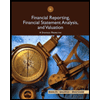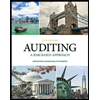
Introduction: Acquisition is a corporate term used to represent purchase of another company and gaining the ownership of the company.
To prepare: Value Analysis as well as Determination and distribution of excess schedule.
Answer to Problem 2.1.2P
Acquisition cost
Determination and distribution of excess schedule
Explanation of Solution
Acquisition is a corporate term to define buying all of another company and gain the ownership of the company.
Identify the acquirer: for acquisition it is very important for acquiree’s to know the acquirer.
Following things should be kept in mind voting rights, large minority interest, governing body of combined entity and terms of exchange.
Determine the acquisition of the company.
Measures the fair value of acquiree: the fair value of the aquiree as an entity is assumed to be paid by the acquirer. The price includes the contingent consideration, the costs of acquisition are not included in the price of the company acquired and expended.
Record acquiree’s assets and liabilities that are assumed: the fair value of all identifiable assets and liabilities of the acquire are determined and recorded.
Contingent consideration: contingent consideration is consideration given on the happening or non-happening of event. It is generally added in purchase consideration and increase goodwill.
Calculation:
Acquisition cost
| Company Fair Value | $810,000 | $810,000 |
| (-) Book Value of Interest Acquired | ||
| Common Stock ($1 par) | $20,000 | |
| Paid-in capital in excess of par | $180,000 | |
| $140,000 | ||
| Total Equity | $340,000 | $340,000 |
| Interest Acquired | 100% | |
| Book Value | $340,000 | |
| Excess of Fair Value over Book Value | $470,000 |
Want to see more full solutions like this?
Chapter 2 Solutions
ADVANCED ACCOUNTING
- Solve this question and accountingarrow_forwardCustom Pools currently sells420 Economy pools, 580 Standard pools, and 190 Premium pools each year. The firm is considering adding a Luxury pool and expects that, if it does, it can sell 310 of them. However, if the new pool is added, Economy pool sales are expected to decline to 290 units while Standard pool sales are expected to decline to 350. The sales of the Premium model will not be affected. Economy pools sell for an average of $16,200 each. Standard pools are priced at $24,500 and the Premium model sells for $42,000 each. The new Luxury pool will sell for $35,000. What is the value of erosion?arrow_forwardI need help with this solution and general accounting questionarrow_forward
- Naveen Electronics started the year with total assets of $425,000 and total liabilities of $275,000. During the year, the business recorded $580,000 in revenues, $390,000 in expenses, and dividends of $75,000. What is the net income reported by Naveen Electronics for the year?arrow_forwardI am trying to find the accurate solution to this general accounting problem with the correct explanation.arrow_forwardSolve step by step .arrow_forward
 Financial Reporting, Financial Statement Analysis...FinanceISBN:9781285190907Author:James M. Wahlen, Stephen P. Baginski, Mark BradshawPublisher:Cengage Learning
Financial Reporting, Financial Statement Analysis...FinanceISBN:9781285190907Author:James M. Wahlen, Stephen P. Baginski, Mark BradshawPublisher:Cengage Learning Cornerstones of Financial AccountingAccountingISBN:9781337690881Author:Jay Rich, Jeff JonesPublisher:Cengage Learning
Cornerstones of Financial AccountingAccountingISBN:9781337690881Author:Jay Rich, Jeff JonesPublisher:Cengage Learning Auditing: A Risk Based-Approach (MindTap Course L...AccountingISBN:9781337619455Author:Karla M Johnstone, Audrey A. Gramling, Larry E. RittenbergPublisher:Cengage Learning
Auditing: A Risk Based-Approach (MindTap Course L...AccountingISBN:9781337619455Author:Karla M Johnstone, Audrey A. Gramling, Larry E. RittenbergPublisher:Cengage Learning


